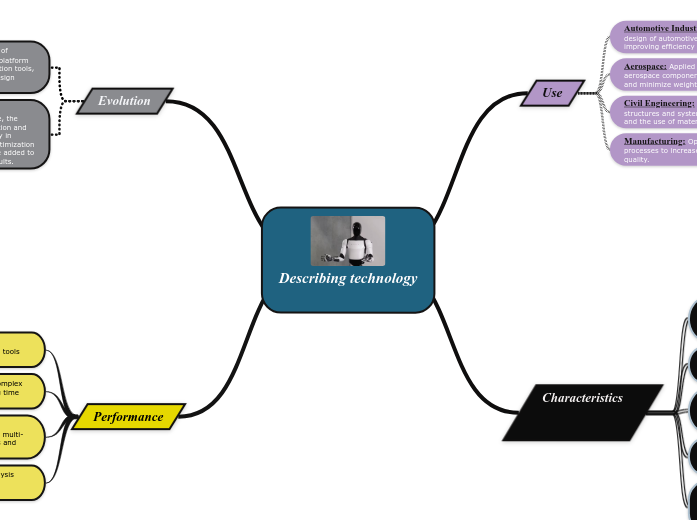
Describing technology
Use
Automotive Industry: Used to optimize the design of automotive components and systems, improving efficiency and reducing costs.
Aerospace: Applied in the design of aircraft and aerospace components to maximize performance and minimize weight.
Civil Engineering: Helps in the design of civil structures and systems, optimizing resistance and the use of materials.
Manufacturing: Optimizes manufacturing processes to increase efficiency and product quality.
Characteristics
Optimization Algorithms: Includes a variety of algorithms such as gradient-based optimization, genetic algorithms, and artificial intelligence techniques.
Improved User Interface: A more intuitive and easy-to-use interface that makes it easier to configure and execute optimization processes.
Simulation Capability: Integration with finite element simulations (FEA), computational fluid dynamics (CFD), and other advanced simulation techniques.
Scalability: Ability to handle large volumes of data and run multiple simulations in parallel, which is crucial for large, complex projects.
Customization and Flexibility: Allows users to customize workflows and adapt the tool to their specific needs.
Evolution
First Generation: The first generation of Optimus focused on providing a robust platform for the integration of design and simulation tools, allowing engineers to automate their design processes.
Second Generation: Optimus Gen 2 significantly improved the user interface, the ability to integrate with multiple simulation and optimization software, and the efficiency in handling large volumes of data. New optimization and sensitivity analysis techniques were added to provide more accurate and relevant results.
Performance
Cross-Platform Integration: Ability to integrate with a wide variety of simulation tools and CAD/CAE
Automation: Allows the automation of complex design and simulation processes, reducing time and manual effort.
Advanced Optimization: Implements advanced optimization algorithms such as multi-objective optimization, sensitivity analysis and design of experiments (DOE).
Data Analysis: Robust tools for data analysis that help interpret and visualize results, facilitating decision making.
